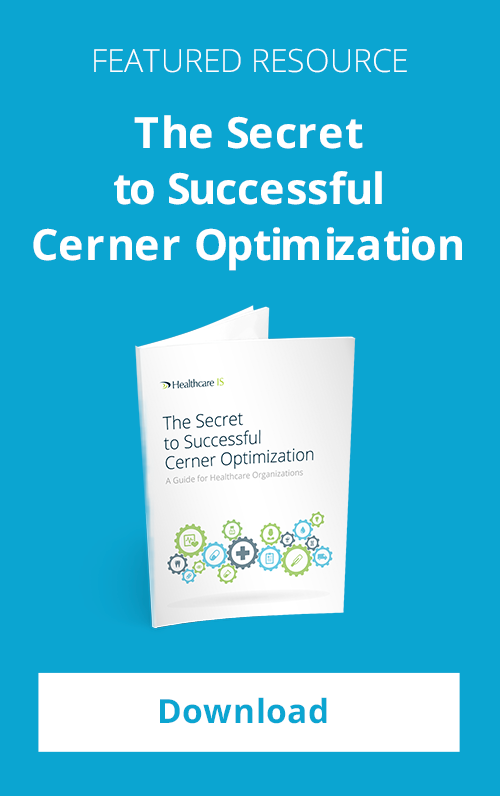Cerner provides a great product as well as good support services, but it's not wise to solely rely on those services when staffing for an implementation. Rather than making assumptions based on implied understandings from Cerner, it’s incumbent upon the customer to come to a clear contractual agreement with well-defined resource expectations.
Otherwise, customers can wind up with a false sense for when implementation will be complete, or in some cases what the additional cost may be. Cerner is an industry leader and has impressively gained market share in recent years, but as it has grown, its support resources have been stretched thin.
This makes it crucial for customers to negotiate very carefully when buying a Cerner solution and examine the contract very carefully before moving forward. Otherwise, it’s very easy for the customer to assume they will be given enough resources and staffing support, when in fact they may not actually receive enough to support the internal operational project.
By clearly dictating the contract terms, organizations can figure out how many additional staffing resources are necessary.
Determining Consultant Need
Most successful Cerner implementations involve expert consultants, particularly project managers, hired through healthcare IT staff augmentation services. How many of those consultants are needed, however, depends on the organization and the size and magnitude of the project.
Assessing how many current hospital staff resources are equipped to contribute to a Cerner implementation is the first step. Once that is calculated, then leadership must decide how many of those qualified resources they can afford to re-assign from their current tasks and place on the Cerner implementation project or where they require staff augmentation to back-fill current positions so that internal expertise can be focussed on the project.
[Related: Download "The 6 Phases of a Successful Cerner Implementation" Ebook]
Organizations that possess numerous qualified resources that they can allocate to the Cerner implementation team don’t need to hire as many third-party consultants. Conversely, organizations that either don’t have many qualified resources or aren’t able to spare many of the qualified resources they do have, will have to bring on outside expertise. Most organizations fall into the latter category and require significant staffing help.
One factor to keep in mind is that organizations whose employees have a lot of Cerner experience can still potentially save some money in the budget even if they don’t have the time to work on the project, because they won’t require as much training down the line.
Once an organization has signed the contract and knows how much support it can expect from Cerner and has conducted analysis to decipher how many current hospital staff resources will be able to join the project team, it becomes necessary to identify the gaps.
Those gaps will be filled by consultants from staff augmentation/consulting services. The extent of those gaps indicate how many third-party experts are required.
One caveat is that potential changes to the scope of the project will directly impact how many consultants are needed, so some flexibility is necessary.
Importance of Cultural Fit
Last, but certainly not least, it’s important to consider cultural fit when staffing an implementation.
Not all consultants are created equal and having the right people skills and attitude is often just as important as having the technical know-how. The consultant you choose to help in the Cerner changeover will often be assisting not only on the tech side of things, but will also be called upon to explain concepts and project details to people across different departments in your organization.
They’ll be working day in and day out with your team that has likely already established norms in workflow and handling day-to-day operations. If this person fails to integrate with the rest of your team during the course of the project, the implementation timeline can be put into jeopardy.
This is why it’s so important to define and identify exactly what type of person will be necessary to fit into your organization’s particular work environment.
Learn what it takes to master the complicated process of implementing the Cerner EHR platform into your organization by downloading our Ebook.



Comments